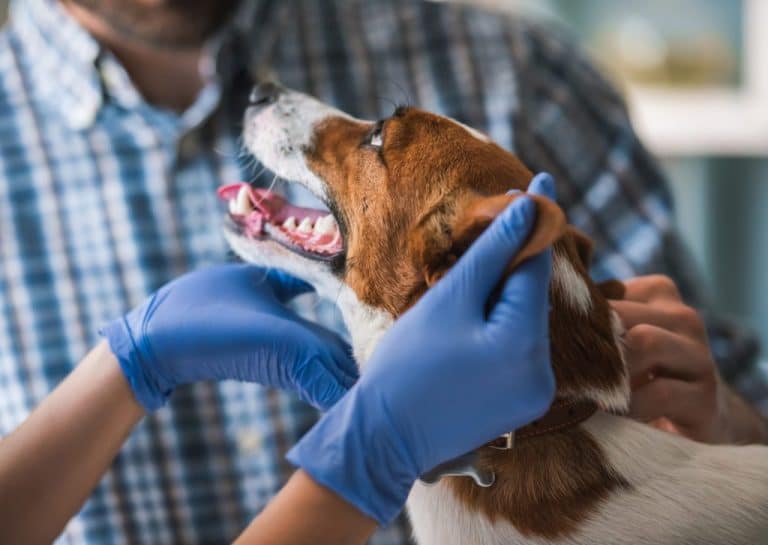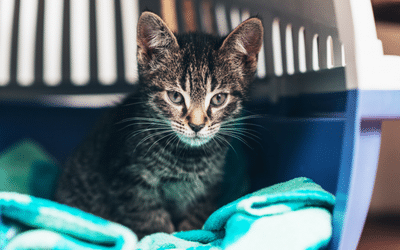Osteoarthritis (OA) is a painful, degenerative disease that causes inflammation in the joints, reduces pets’ ability to move or move easily, and lowers their quality of life. OA cannot be cured, but the disease can be slowed, especially if caught early. The condition is also more common in both dogs and cats than you might think.
How Many Pets Get Arthritis?
Arthritis affects at least 20% to 25% of dogs. And size doesn’t matter. Although larger dogs may be more prone to getting OA, any size dog can develop the disease. OA can be caused by wear and tear on the joints, but more often in dogs, it’s the result of developmental joint diseases.
Arthritis is also fairly common in cats. Studies have found evidence of OA ranging from 22% up to more than 90% of cats.
Isn’t It Just Old Pets Who Get OA?
Although we may think of arthritis as a disease that develops as pets age, that’s not always the case. In fact, cats and dogs of almost any age can develop OA.
However, OA may become more noticeable in pets as they get older. Ideally, we want to catch the disease before it gets too advanced.
How Do I Know If My Pet Has OA?
Watch for any potential behavior or physical changes associated with OA. If your pet is older, don’t assume that any changes that you notice are just related to age.
Signs of OA-associated pain in pets include changes in mobility, activity, or sociability. These changes may be subtle.
Osteoarthritis is a painful, progressive disease. The earlier we catch it, the more we can do to help your pet—even potentially slowing down the disease.
In dogs, signs of arthritis include:
- Limping
- Favoring a leg
- Lagging behind on walks
- Reluctance to get up from a seated or lying position
- Trouble jumping up onto or off the sofa/bed or into or out of the car
- Reluctance to go up or down stairs
- Sleeping more
- Eating less
- Hiding or avoiding contact with other pets or family members
- Irritability, especially when handled or approached
- Chewing, licking, or biting painful areas
- Lack of interest in playing
In cats, signs of arthritis include:
- Making small jumps instead of a big leap to get up onto a table or countertop
- Reluctance to jump from heights
- Difficulty getting in or out of the litterbox
- Urinating or defecating outside the litterbox
- Trouble with or lack of grooming
- Reluctance to go up or down stairs
- Awkward movements (less graceful than normal)
- Hiding or avoiding contact with other pets or family members
- Changes in mood or tolerance of being handled (irritability)
- Sleeping more
- Eating less
- Lack of interest in playing
You can use these checklists to help spot arthritis pain in your dog or cat—and share the results with us:
Can I Help Prevent My Pet From Getting Arthritis?
Although we can’t know for sure if what we do will prevent OA in pets, there are some steps you can take to help reduce the chance that your pet will get the disease:
- Keep your pet at a healthy weight, or help him or her lose weight, if needed.
- Make sure your pet gets enough low-impact exercise, such as walking.
- Ask us whether your pet could benefit from a special diet or supplement.
These steps can also benefit pets who already have OA.
How Else Can I Help My Pet With Arthritis?
Although OA can’t be cured, your pet doesn’t have to live with the pain from arthritis. We have many options to help pets with OA.
Younger pets and those in the early stages of OA may not show obvious signs of the disease, such as limping. The earlier we detect the disease, the more we can do to help your cat or dog with OA. That’s why it’s important for us to screen your pet for arthritis.
When you come in to Beach Avenue for your pet’s arthritis screening, your veterinarian will do an arthritis exam on your dog or cat and determine the best OA management plan for your individual pet.
Make an appointment today to set up your pet’s OA screening exam at our downtown Vancouver veterinary practice. We’ll work with you to get your pet moving more comfortably again and to make sure your pet stays as pain-free as possible.
References
- American College of Veterinary Surgeons. Osteoarthritis in dogs. https://www.acvs.org/small-animal/osteoarthritis-in-dogs. Accessed May 5, 2021.
- Godfrey DR. Osteoarthritis in cats: a retrospective radiological study. J Small Anim Pract. 2005;46(9):425-429.
- Hardie EM, Roe SC, Martin FR. Radiographic evidence of degenerative joint disease in geriatric cats: 100 cases (1994-1997). 2002;220(5):628-632.
- Lascelles BD, Henry JB III, Brown J, et al. Cross-sectional study of the prevalence of radiographic degenerative joint disease in domesticated cats. Vet Surg. 2010;39(5):535-544.
- Mele E. Epidemiology of osteoarthritis. Vet Focus. 2007;17(3):4-10.
- Slingerland LI, Hazewinkel HA, Meij BP, et al. Cross-sectional study of the prevalence and clinical features of osteoarthritis in 100 cats. Vet J. 2011;187(3):304-309.










